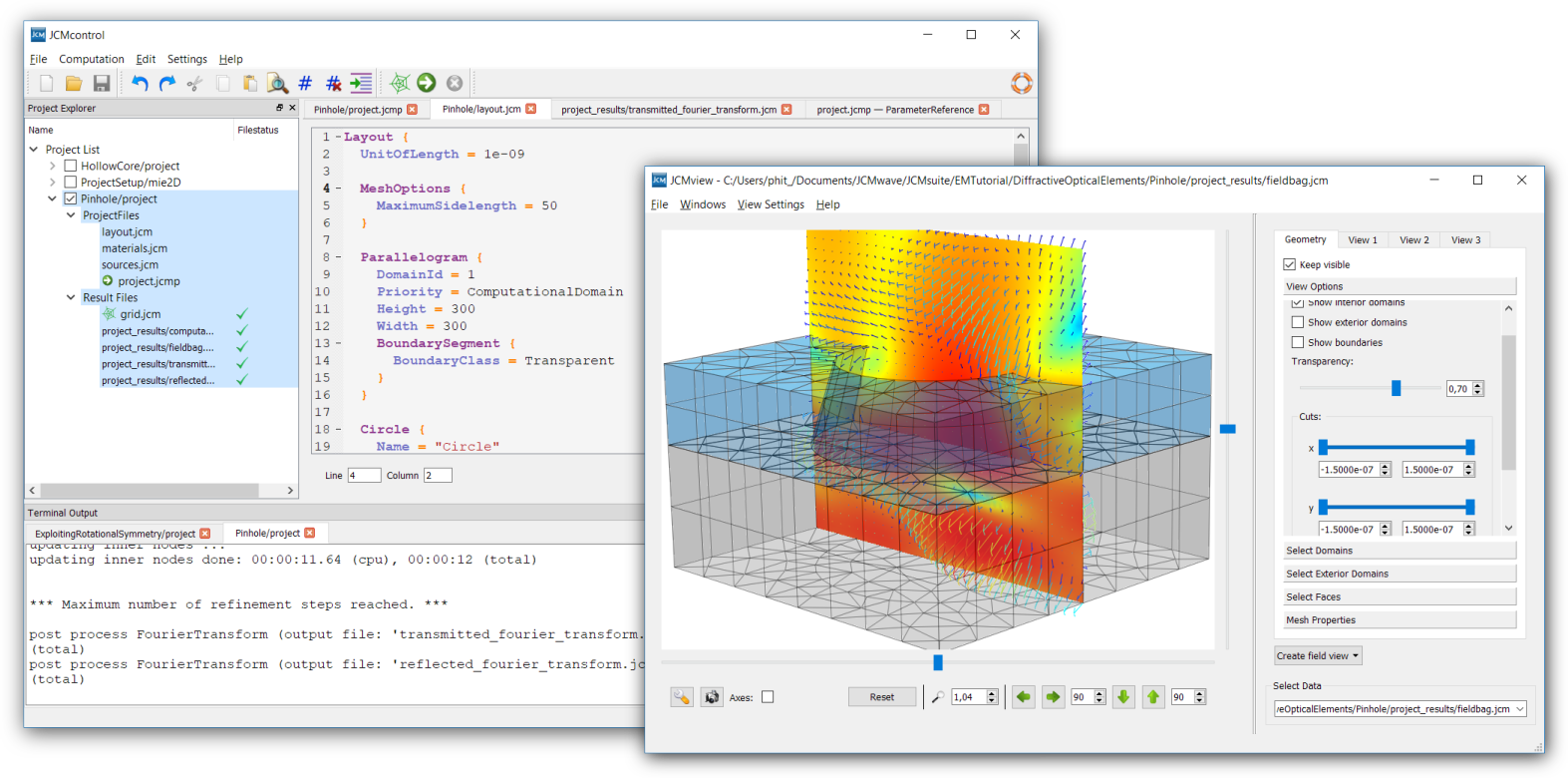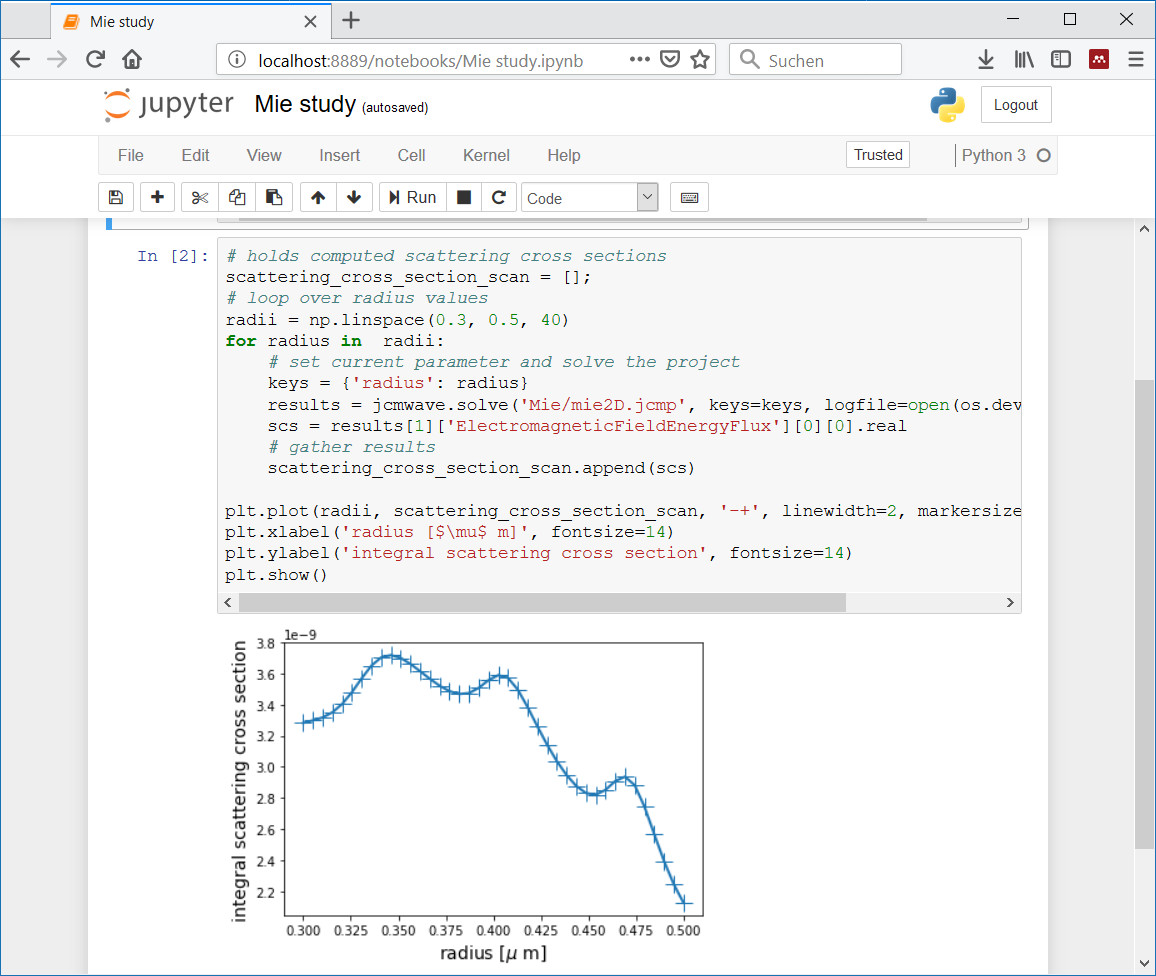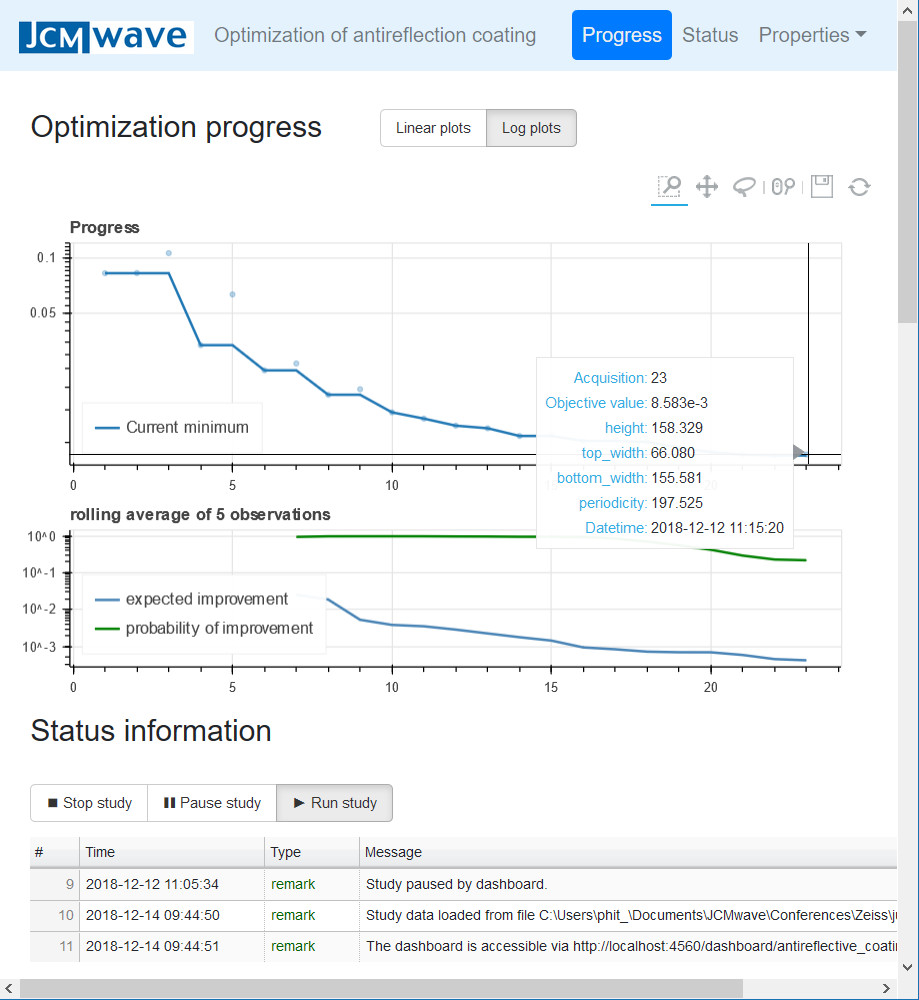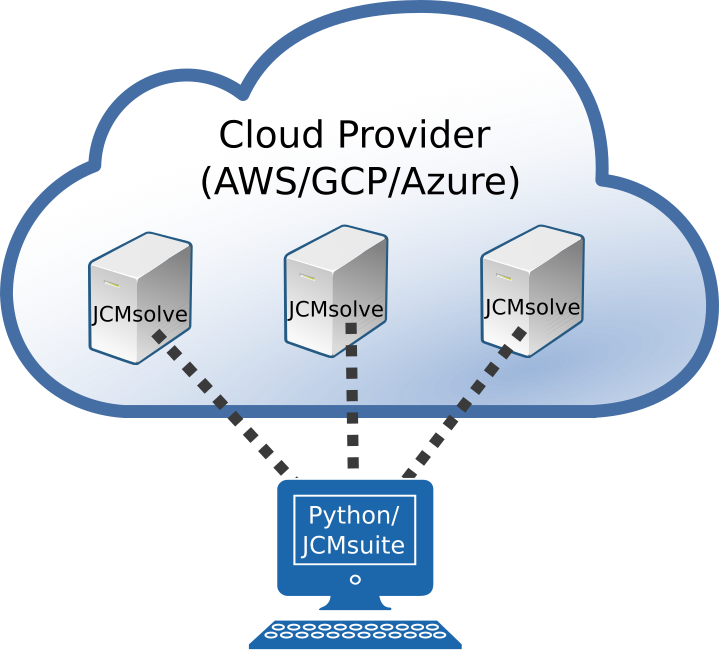Models
JCMsuite solves time-harmonic Maxwells equations for
- Optical scattering problems
- Optical waveguide design problems,
- Optical resonance problems,
as well as - Linear elasticity problems,
- Heat conduction problems,
and any coupled problem classes of these types.
JCMsuite allows for any complex and anisotropic material permittivity and permeability tensors.
Mathematical Background
JCMsuite is based on advanced mathematical methods and technologies from computer science.
- High order vectorial finite elements
- Exact 2D and 3D geometry modelling using unstructured meshes
- Self-adaptive grid refinement relying on residual-based error estimation
- Combination of different mesh refinement levels and polynomial ansatz functions of varying degree
- 1D, 2D, 3D Cartesian coordinatesystems, cylindrically symmetric, mirror symmetric and twisted coordinate systems
- Rigorous treatment of periodic and transparent boundaries
- Automatic computation of first- and higher-order parameter derivatives
Easy-to-use data access and processing
JCMsuite is designed to fully integrate into your MATLAB®/Octave or Python environment. The entire design task can, besides running stand alone, be embedded into these high-level scripting languages, enabling an intuitive, comfortable and flexible scripting of complicated design setups via
MATLAB®/Octave-, Python-, C-interfacing.
Various post-processes for the analysis of simulation results (e.g., Poynting flux, Fourier transformation, optical imaging) are included.
JCMsuite is based on advanced mathematical methods and technologies from computer science. It leverages the power and flexibility of the Finite Element Method (FEM) to achieve fast and accurate results and uses latest machine-learning technologies to optimize complex optical devices.
![]()
CAD and meshing tools
![]()
Hp-FEM solver
![]()
Analysis and optimization toolkit
JCMsuite has intuitive and flexible graphical and scripting interfaces for setting up projects and inspecting simulation results. Complex optimization runs can be tracked via a powerfull dashboard. For computationally demanding simulation tasks, cloud computing resources can be integrated with ease.
Graphical User Interfaces
JCMsuite offers graphical user interfaces to control, edit and view simulations projects and results:

How to get started Download and try for free
Scripting Interfaces

Analysis and Optimization Toolkit

Computing on Remote Workstations or Cloud Resources

The slideshow contains a brief explanation of some advantages of the Finite-Element Method (FEM) for simulations in photonics and nano-optics. Benchmarks against FDTD, RCWA and other FEM solvers show the exceptionally short computation times of the higher-order FEM method implemented in JCMsuite.
View on slideshare: Advantages of Finite-Element Method for Nano-Optics Simulations
The slideshow contains a brief explanation of Gaussian process regression and Bayesian optimization. For two optimization problems, benchmarks against other local gradient-based and global heuristic optimization methods are included. They show, that Bayesian optimization can identify better designs in exceptionally short computation times.
View on slideshare: A machine learning method for efficient design optimization in nano-optics
The complexity of modern nano-optical systems makes extensive simulations indispensable. Especially rigorous simulations as delivered by JCMsuite yield a deep understanding of the underlying phenomena. Find out more about the challenges in different areas.

Computational Lithography
JCMsuite allows for the complete optical simulation chain: the description of complex illuminations, the computation of optical fields propagating through optical imaging systems and through photomasks up to the formation of images in photoresists.
Tutorial examplesRelated publications: Computational Lithography EUV Mask

Computational Metrology
Optical metrology for structures with periods larger than half of the illumination wavelength has become a standard metrology technique. However, the development of fast and rigorous simulation techniques together with designed measurment setups allows for optical metrology approaches in deep subwavelength regimes.
Tutorial examplesRelated publications: Computational Metrology

Waveguides and Fibers
JCMsuite computes waveguide modes and corresponding propagation constants for all kinds of waveguides including single- and multimode fibers, photonic crystal fibers, microstructured fibers, integrated optical waveguides, plasmonic waveguides. Mode computation in cylindrical and twisted coordinate systems allows to rigorously compute the effect of waveguide bending.
Tutorial examplesRelated publications: Waveguides and Fibers

Photovoltaics
JCMsuite supports all aspects of improving the photovoltic efficiency: analysis of the efficiency of layer structures and material compositions, the effect of random and micro-structured layers, backreflectors and surfaces, plasmonic effects of regular or randomly distributed plasmonic particles and nonlinear effects including frequency conversion.
Tutorial examplesRelated publications: Photovoltaics

Light Sources
Light sources such as laser diodes, VCSELs, LEDs, OLEDs, and single-photon sources are fundamental building blocks of optical devices. JCMsuite allows for the efficient simulation and optimization of their optical properties, including far field distributions, fiber-coupling efficiencies and thermal lensing effects.
Tutorial examplesRelated publications: Light Sources

Nanostructured Materials
JCMsuite allows for the design and analysis of the optical properties of new nanostructured materials. Examples are plasmonic materials, chiral materials, photonic crystals and quasi-crystals, metamaterials, rough interfaces, nanocomposites, and others.
Tutorial examplesRelated publications: Nanostructured Materials Metamaterials

